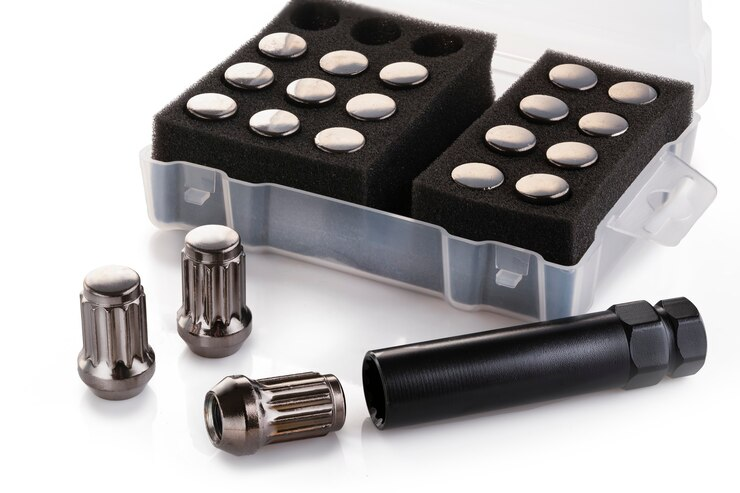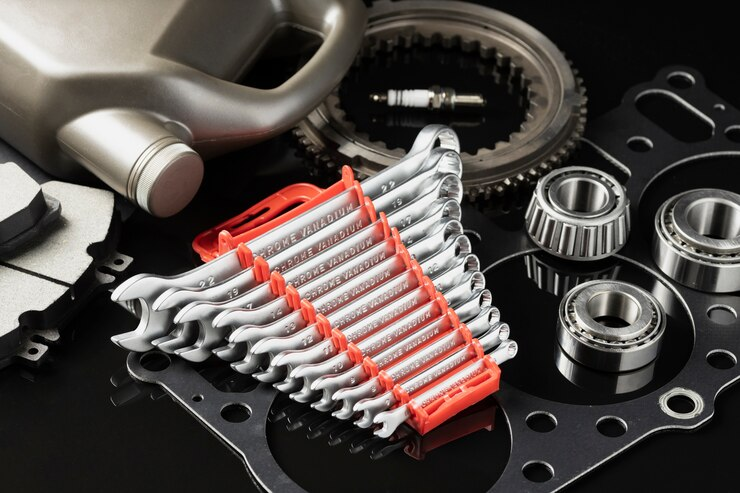The Subaru Sambar is a beloved vehicle that has been in production since 1961. Known for its compact size, versatility, and unique character, it has earned a reputation as a reliable choice for urban commuting and commercial use. However, to keep your Subaru Sambar running smoothly for years, it is essential to properly maintain its parts. Like any vehicle, regular maintenance will extend its lifespan, improve performance, and reduce repair costs.
In this article, we will discuss 8 vital tips to maintain your Subaru Sambar parts for longevity. By following these guidelines, you can ensure your Sambar continues to serve you well while preserving its core components in optimal condition.
1. Regularly Check and Change the Oil
Engine oil is crucial for the smooth operation of your Subaru Sambar. It lubricates the moving parts within the engine, reduces friction, and prevents overheating. Over time, oil breaks down and becomes less effective, leading to increased wear and tear on engine parts.
How to Maintain:
- Check the oil level regularly and top it up as needed.
- Change the oil every 3,000 to 5,000 miles or as recommended in the owner's manual.
- Use the recommended oil type for your Subaru Sambar. It’s important to use the right oil viscosity and quality to avoid damaging the engine.
- Change the oil filter at every oil change to ensure that clean oil circulates through the engine.
Regular oil changes are one of the most effective ways to maintain Subaru Sambar parts, ensuring the engine remains in top condition for longer.
2. Inspect and Replace the Air Filter
The air filter is responsible for preventing dirt and debris from entering the engine, which can cause damage to internal components. A clogged or dirty air filter can reduce engine efficiency and lead to poor fuel economy. Ensuring that the air filter is clean and in good condition is essential for the longevity of your Subaru Sambar.
How to Maintain:
- Check the air filter every 12,000 miles or as recommended by the manufacturer.
- Replace the air filter if it appears dirty or clogged. This is a relatively inexpensive maintenance item that can prevent costly repairs down the road.
- Opt for high-quality replacement filters that fit your Subaru Sambar model for optimal air filtration.
A clean air filter ensures that the engine receives the necessary airflow to operate efficiently and prevents unnecessary wear on the engine components.
3. Monitor the Timing Belt
The timing belt is a crucial component of the engine, controlling the timing of the engine’s valves. If the timing belt breaks or wears out, it can lead to serious engine damage. Maintaining the timing belt is essential for preventing costly repairs.
How to Maintain:
- Check the timing belt at regular intervals as recommended by the manufacturer. Typically, the timing belt should be replaced every 60,000 to 100,000 miles.
- Listen for unusual engine noises, as a failing timing belt can often cause clicking or grinding sounds.
- If your Subaru Sambar uses a chain instead of a belt, make sure the chain is lubricated and free of debris.
- Replace the timing belt at the first sign of wear, even if it hasn’t reached the recommended mileage. It’s better to replace it early than to risk a breakdown.
The timing belt is essential for keeping the engine running smoothly. Taking the time to check and replace it at the appropriate intervals will ensure the longevity of your Subaru Sambar's engine parts.
4. Inspect the Brakes Regularly
The braking system is a critical safety feature of any vehicle, and the Subaru Sambar is no exception. Brake pads and rotors wear down over time and need to be checked and replaced regularly to ensure that the vehicle can stop safely.
How to Maintain:
- Inspect the brake pads and rotors every 15,000 to 30,000 miles, or more frequently if you notice any signs of braking issues, such as squeaking, grinding, or reduced stopping power.
- Replace worn brake pads and resurfaced rotors as needed to maintain optimal braking performance.
- Keep the brake fluid at the recommended level, as low fluid can affect braking efficiency.
Regular brake maintenance is vital not only for the safety of the driver but also for ensuring that the braking system’s parts remain in good condition.
5. Maintain the Cooling System
The cooling system in your Subaru Sambar regulates the engine temperature and prevents overheating. Over time, coolant levels can drop, or the radiator may become clogged, reducing the system's effectiveness. Proper maintenance of the cooling system is crucial for engine longevity.
How to Maintain:
- Check the coolant levels regularly and top up with the recommended coolant if necessary.
- Flush the radiator and replace the coolant every 30,000 to 50,000 miles, or according to the manufacturer’s guidelines.
- Inspect the radiator for any signs of leaks or corrosion. A damaged radiator can lead to overheating, which can severely damage the engine.
- Make sure the thermostat is working correctly. A malfunctioning thermostat can cause the engine to run too hot or too cold, leading to poor engine performance.
By maintaining the cooling system, you help prevent engine overheating, ensuring that the Subaru Sambar’s engine parts remain in top condition.
6. Check the Tires and Alignment
Proper tire maintenance is essential for both vehicle safety and performance. Incorrect tire pressure or poor alignment can cause uneven tire wear, which can lead to more frequent replacements and reduced fuel efficiency. Maintaining your tires and alignment ensures a smooth, safe ride and helps preserve the longevity of the Subaru Sambar parts related to suspension and handling.
How to Maintain:
- Check the tire pressure at least once a month. Ensure that the tires are inflated to the recommended PSI (pounds per square inch), which can be found in the vehicle's owner’s manual or on the sticker inside the driver's door.
- Rotate the tires every 6,000 to 8,000 miles to ensure even wear.
- Inspect the tires for signs of damage or excessive wear. If the tread is worn down, it’s time to replace the tires.
- Check the alignment of the tires regularly. Poor alignment can cause uneven tire wear and negatively affect steering and suspension components.
By keeping the tires in good condition and ensuring proper alignment, you protect the suspension system and other vital Subaru Sambar parts from unnecessary strain.
7. Perform Regular Fluid Checks
In addition to engine oil and coolant, other fluids such as brake fluid, power steering fluid, and transmission fluid are essential for the proper operation of your Subaru Sambar. These fluids ensure smooth performance and prevent wear on critical components.
How to Maintain:
- Check the brake fluid regularly. Low brake fluid can cause the brake system to fail, compromising safety.
- Inspect the transmission fluid, ensuring that it is at the correct level and free from debris or discoloration.
- Maintain the power steering fluid at the correct level, as low fluid can cause steering difficulty and damage to the power steering pump.
- Keep an eye on the differential fluid and other specialized fluids depending on your vehicle's specifications.
By performing regular fluid checks and ensuring that all systems are well-lubricated, you help prevent premature wear and tear on Subaru Sambar parts.
8. Keep the Exterior Clean and Protected
While engine and mechanical maintenance are essential for the longevity of your Subaru Sambar, caring for its exterior is equally important. The body and chassis are subject to environmental elements, such as dirt, salt, and moisture, which can cause rust and corrosion over time.
How to Maintain:
- Wash the exterior regularly to remove dirt, road salts, and debris that can cause damage to the paint and body.
- Apply a protective wax coating every few months to keep the paint looking fresh and shield it from the elements.
- Inspect the undercarriage for signs of rust or corrosion, especially after driving in salty or wet conditions.
- If you notice any small chips or scratches in the paint, have them repaired promptly to prevent rust from developing.
By maintaining the exterior of your Subaru Sambar, you protect its structural integrity and ensure that the body remains in good condition, which is essential for the overall longevity of the vehicle.
Conclusion
Maintaining the Subaru Sambar parts is essential for ensuring the vehicle’s longevity and performance. From regular oil changes and air filter replacements to tire maintenance and fluid checks, there are several steps you can take to preserve your Sambar’s critical components. By incorporating these 8 tips into your maintenance routine, you can ensure that your Subaru Sambar continues to provide reliable service for years to come. With proper care, your Sambar will continue to be a dependable companion on the road, saving you money on repairs and helping to keep your driving experience as enjoyable as ever.
Remember, proactive maintenance is key to keeping your Subaru Sambar running at its best. Follow these tips, and you’ll be well on your way to enjoying many more miles behind the wheel.








.jpeg)

